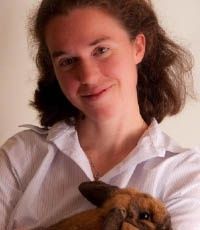Italian Livestock Breeds


We have Italy to thank for some really awesome cheeses: mozzarella, gorgonzola, ricotta …and it's no surprise that Italy is also responsible for the development of some fascinating cattle and goat breeds. After all, that milk had to come from somewhere!
And Italy, with its mixture of mountains, sea, and farms, is home to some interesting—and sometimes rare—non-dairy livestock breeds as well.
Perhaps your farm could benefit from a bit Italian influence in the livestock department…have fun exploring!
Chianina Cattle
In the U.S., we’re so used to the idea of beef cattle and dairy cows that it’s easy to overlook the third common use for cattle, as draft animals. But this is exactly what the Chianina was traditionally used for in the past. And what a long past it has!
The Chianina was developed during the height of the Roman Empire and was even mentioned by the poet Virgil. For nearly 2,000 years it was used as a draft animal, performing farm and transportation work.
Today the large-bodied, heavy, and muscular breed is prized for its beef. Chianina genetics were introduced to the U.S. during the 1970s, after military members serving in Italy during World War II brought attention to the breed’s attributes.
Ancona Chicken
In the times before modern transportation, it was common for subsets of livestock breeds to develop in particular locations because movement of people—let alone animals—was slow. That was the case with the Ancona, originally bred on the east coast of Italy, in the Marches region.
Bred in part with Leghorn blood, the Ancona was popular in Italy in the mid-1800s, but it was refined into its current state in England, and was eventually more popular there and in the U.S. than in its native land. Thanks to the Leghorn influence, Anconas are excellent layers and can easily exceed 200 eggs per year with minimal broodiness.
They also enjoy flying, so take care if you try raising these unique birds!
Agerolese Cow
The Agerolese is a fairly rare dairy breed, originating in Italy’s Campagna region. It was developed using the common native Podolica cattle, crossed with some other dairy genetics like Swiss Browns and Jerseys.
Today, Agerolese bulls are black, the cows brown, and both are horned, with a dorsal stripe on their backs. It’s not a large dairy breed; the cows are typically around 900 pounds.
The breed thrives in the climate conditions found in its native ltaly, and while the cows don’t produce milk in amounts as high as Holsteins, they can still produce a respectable 5 gallons per day.
This milk is sometimes used to produce those delightful Italian cheeses.
Napoletana Goat
Speaking of milk and dairy delights, we can’t ignore the reddish/black Napoletana. Technically a dual-purpose meat/milk breed, it was developed around the Naples area in Campania, and remains an endangered breed there with only a few hundred individuals. Yet just like the Ancona Chicken, these small subsets of local breeds provide an important biodiversity reservoir.
Napoletanas are great milkers and nannies have a high milk yield. Both sexes are horned.

Appenninica Sheep
One Italian livestock breed that is not at all endangered is the Appenninica Sheep—a modern development in the 1970s, created from a crossbred mixture of various native Italian sheep breeds. They’re named after the rugged Apennine Mountains that run down the center of the Italian Peninsula.
The Appenninica’s wool production is decent, and the wool is medium-coarse; nevertheless the Appenninica is raised mainly for the meat. Their faces lack heavy wool, and their ears are often held out horizontally from the head.
Haflinger Horse
A small but sturdy horse breed with some pony-like characteristics, Haflingers are nearly always chestnut with flaxen (very light blond) manes and tails. They were developed along the border of Austria and northern Italy, and named after the Italian town of Hafling.
Haflingers have a strong U.S. population and following; they’re enjoyed as a draft animal for recreational carriage driving, but also as general all-around family horses for riding.
They average about 14 hands tall. They’re generally sound and surefooted, muscular, and docile, making them a favorite for many horse owners.
About the author
Samantha Johnson is a writer, farm girl, and the author of more than a dozen books on rural living. She lives on a farm in northern Wisconsin with a colorful herd of Welsh Mountain Ponies, a bossy Welsh Corgi, and a wide assortment of tomato plants. View her portfolio at samanthajohnson.contently.com
Tags:Country Critters

Acreage Life is part of the Catalyst Communications Network publication family.














